Photos from Clean Water Act cases contradict media narrative
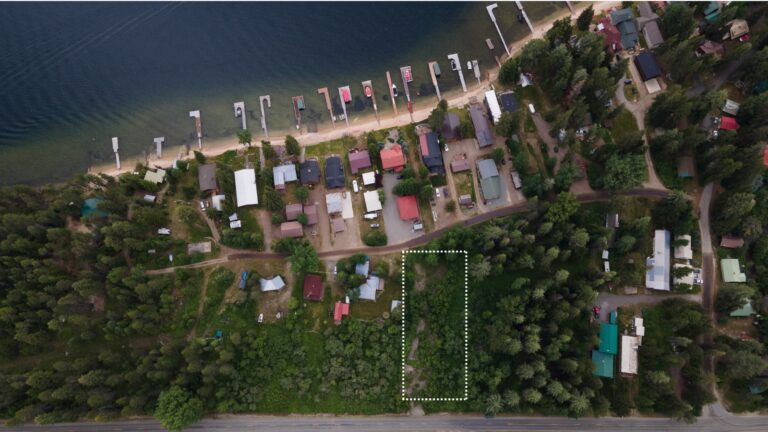
In a recent news broadcast, WDIV Local 4 and other NBC affiliates reported on the ripple-effects of the Supreme Court’s ruling last year in Sackett v. EPA. But the segment muddies the waters by distorting the true stakes, and the media’s overwrought narrative won’t wash.
The piece opens with weatherman Bryan Schuerman intoning, “Today marks the one-year anniversary of a Supreme Court decision that environmental groups say undermined 50 years of progress.” The report, therefore, is based on what “environmental groups say,” which doesn’t seem very fair and balanced. The segment then segues to a representative from Clean Water for All, who warns of the danger to “our drinking water” and “species … habitat.” The post-Sackett status quo, she says, is “terrifying.”
To accompany this worrisome message, the report shows video of a large waterbody, from varying angles. Below, we’ve provided representative still shots:
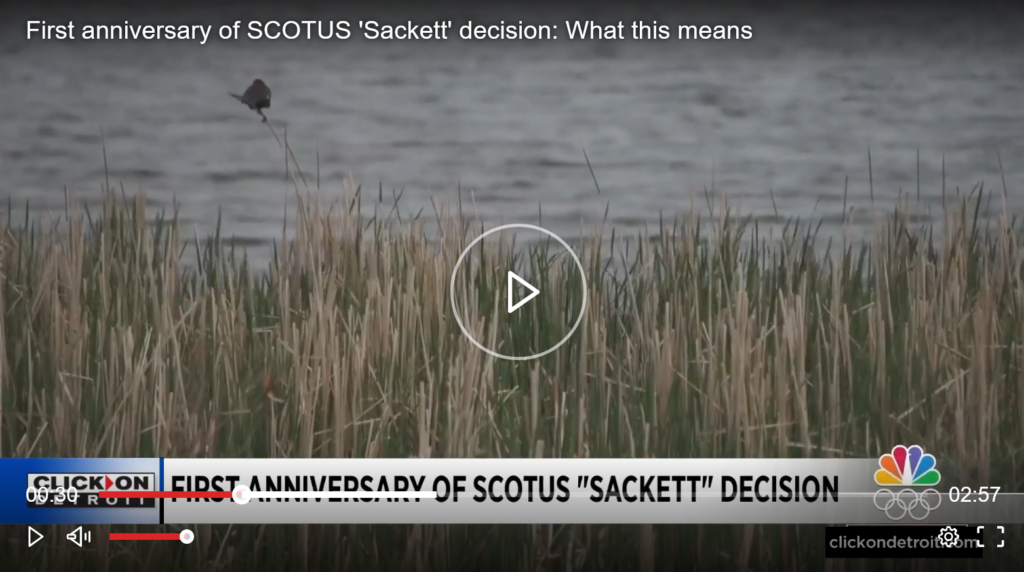
Source: WDIV Local 4.
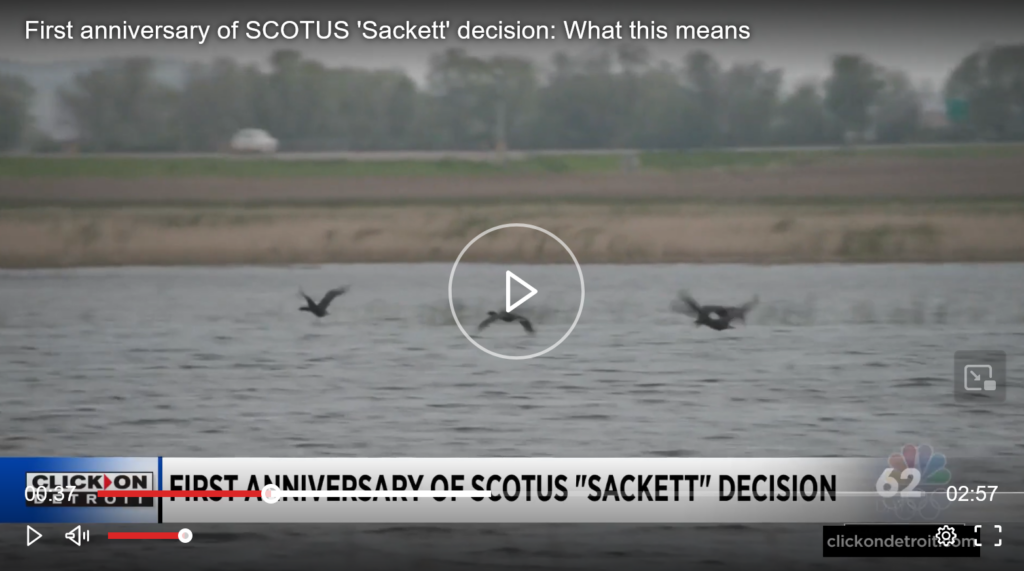
Source: WDIV Local 4.
Between the alarmist rhetoric and littoral imagery, the clear implication is that Sackett endangers America’s rivers and lakes. In real life, Sackett is about puddles and trickles, not rivers and lakes.
Here’s the backstory. The Clean Water Act was passed in 1972 and extends to “navigable waters,” which are (unhelpfully) defined as “waters of the United States.” In the decades prior to Sackett, the federal government steadily expanded its asserted authority over private property by implausibly interpreting the term “navigable waters” to reach isolated wetlands and other dry land features.
Consider the plight of our clients in U.S. Army Corps of Engineers v. Hawkes, Co., a pre-Sackett controversy we took to the Supreme Court (and won). Before subjecting our client to federal jurisdiction, the government performed a site visit of his property and, in the government’s own words, “there was no surface flow in the channel but pools were observed sporadically throughout its length.” Next to this supposed “tributary,” the regulators further determined that 590 (dry) acres were “wetlands,” so this land also was subject to federal control. Mind you, the nearest navigable water was 120 miles away.
A picture is worth a thousand words. Look at the image below, showing putative “navigable waters” in another PLF case from the pre-Sackett era:
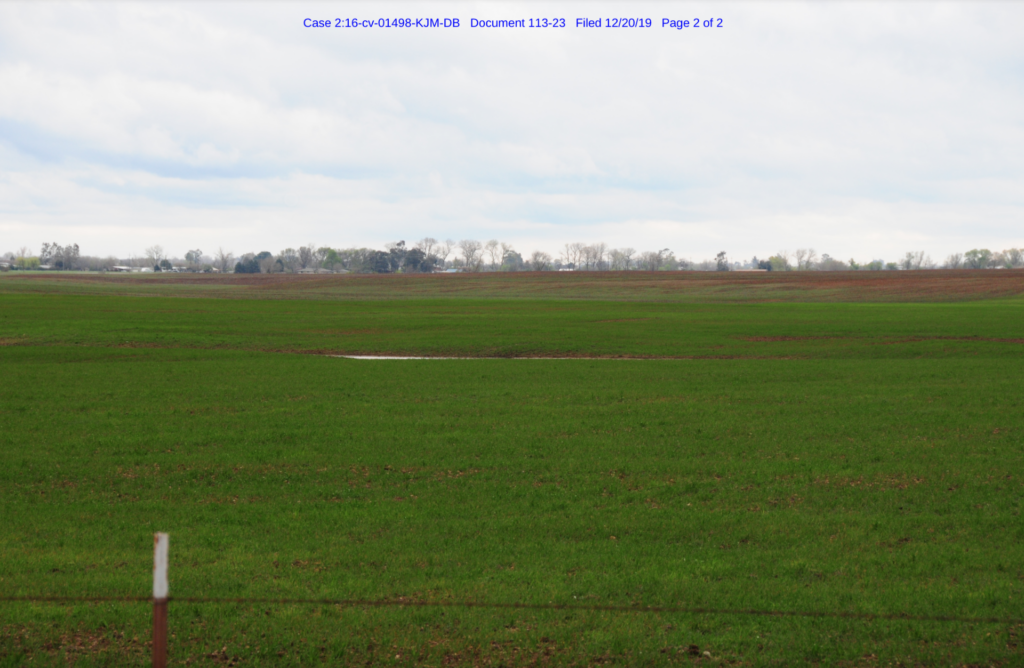
From PLF’s United States v. LaPant case.
The problem was the uncertainty. Because the regulators abandoned common sense, there was no easy way for property owners to know whether they could fully enjoy their property, or if the government might make a federal case out of a backyard puddle. Making matters worse, the relevant agencies gained a reputation for heavy-handed tactics in jurisdictional disputes, as courts have observed.
In Sackett, the Supreme Court put this long-running uncertainty to rest—or, at least, that’s what the opinion does on its own terms (more on that in a bit). Before we get to the legal nitty-gritty of this seminal case, we’d be remiss if we failed to provide an aerial image of the contested “navigable waters” (note that the Sacketts’ property is separated from the nearest body of water by a road and houses).
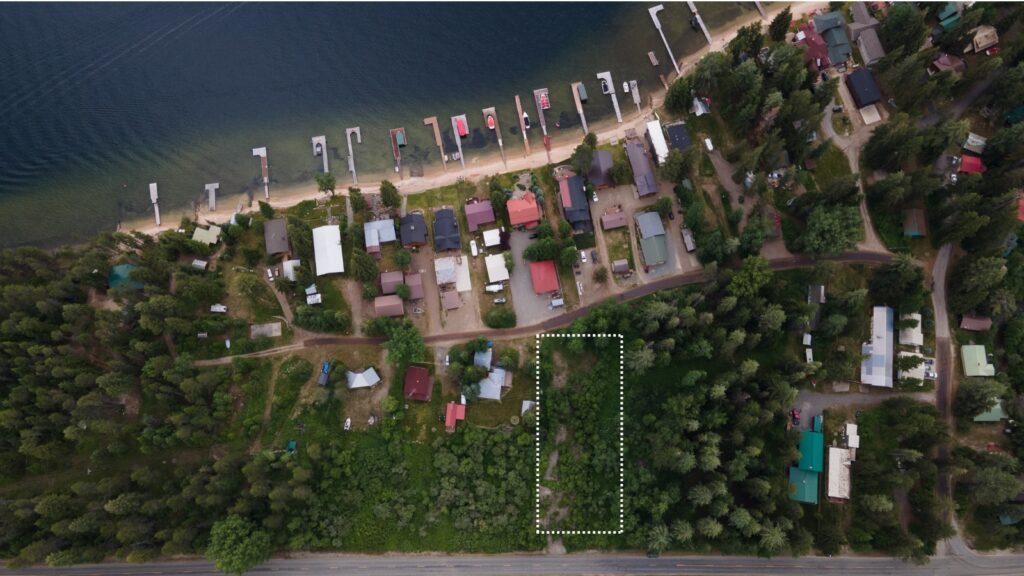
From PLF’s Sackett v. EPA case. The property is marked by dotted line.
In Sackett, the Supreme Court unanimously rejected the prevailing government test for jurisdiction. In place of the government’s amorphous approach, a majority opinion provided a clearcut test. Under the majority’s framework, only those wetlands with a “continuous surface connection” to navigable waters (such as lakes and rivers) are covered by the Clean Water Act. Importantly, this connection must be so continuous that “there is no clear demarcation between ‘waters’ and wetlands,” because the two are “as a practical matter indistinguishable.” This was a test that anyone could perform; finally, landowners had clarity! Or so it seemed.
Which brings us to the real story regarding the one-year anniversary of Sackett. Alas, WDIV Local 4 missed out on a genuine scoop. In the year since the Supreme Court decided this crucial case, the agencies (the EPA and Army Corps of Engineers) have ignored the Court’s clear instructions. In particular, the government has muted the “indistinguishable” part of the test. As a result, the agencies are making the same nonsensical assertions of regulatory authority as they did before Sackett.
Take, for example, North Carolina businessman “Val” Valentine. He owns a tract of land that the government insists is a regulated “wetland” because it is surrounded by rivers and streams. But no reasonable person would have difficulty distinguishing Valentine’s land from nearby waters.
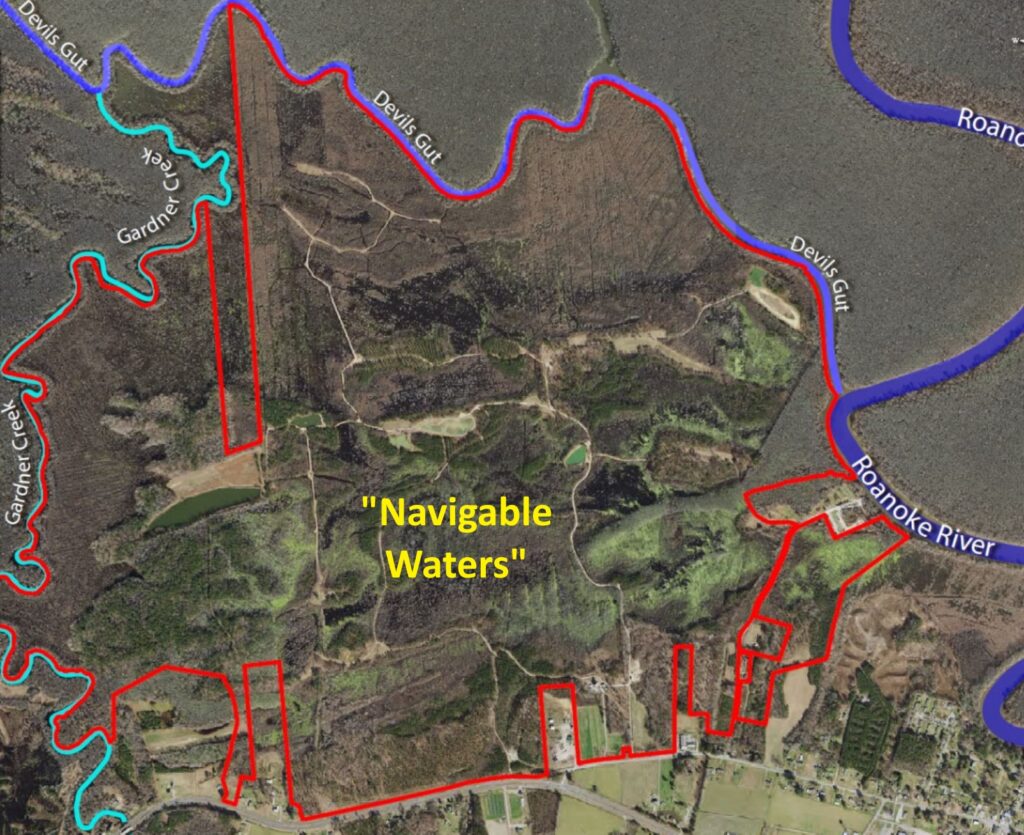
From PLF’s United States v. Valentine case.
Meanwhile, in Iowa, landowner Dan Ward has been told a tributary on his property is a “navigable water”—even though the tributary is typically dry, only three to five feet wide, and separated from the nearest actually navigable river by multiple intermediary rivers and streams.
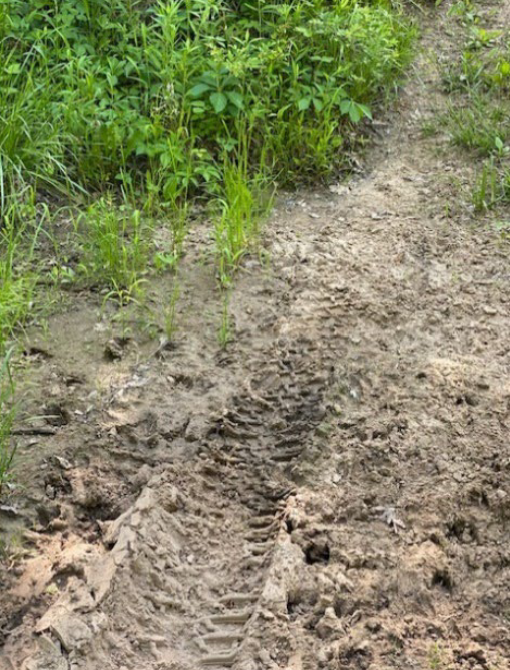
From PLF’s Ward v. Army Corps of Engineers case.
Indeed, the agencies’ expansive definition of “navigable waters” raises constitutional concerns. As Justice Clarence Thomas explained in a concurring opinion in Sackett, the Clean Water Act was passed under Congress’ authority to regulate interstate commerce. But small, isolated “tributaries” and “wetlands” bear no meaningful relationship to interstate commerce. By interpreting the law so broadly, the government risks wading into unconstitutional waters.
Sadly, in Sackett’s wake, there has been no diminishment of the absurdity of the government’s asserted authority. Now, that’s an interesting topic for a Sackett retrospective.






